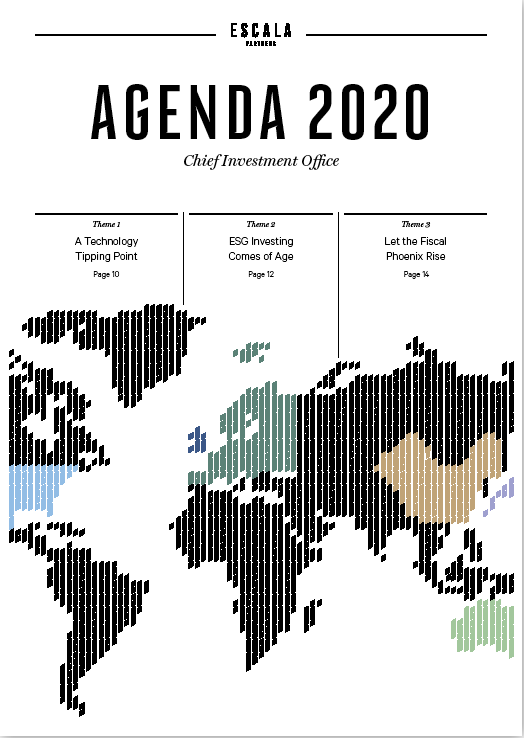-
Overview
Since Apple released the first iPhone in 2007, few industries have been left unscathed. This transformational device was a tipping point in turning entire business models upside-down, while also impacting everyday lives at a more fundamental level. Think retail, banking, communication, and entertainment just to name a few.
The past decade has been replete with similar ideas that have the potential to transform the way we work, live, shop and relax. Investors now need to position for the next 10 years as the ideas become increasingly commercialised and embedded into the fabric of the economy.
A World Economic Forum survey in 2017 predicted a series of “technological tipping points” for the coming decade. They included 3D-printing, driverless vehicles and artificial-intelligence. According to IDC, spending on AI and cognitive systems alone is expected to reach $52.2 billion by 2021, double what it was in 2019. The number of devices connected to the internet is expected to rise from 22 billion in 2018 to 38.6 billion by 2025. Mobile payment volume is set to increase tenfold by 2021 to $US274.4 billion.
Demographics will provide a headwind to this change. Sectors like e-commerce will be supported as close to 150 million millennial and Gen Z consumers exercise their growing spending power. More affluent, older, consumers, will drive demand for healthcare and smart-home innovations.
As the variety and volume of innovations grow, the rate of change for technology breakthroughs is also gaining ground. Escala seeks to ensure our clients participate in these transformations through our various investments in venture capital, private equity, and private debt funds.
Big Data is at the centre of healthcare transformations

Source: Cisco Global Cloud Index
To put that into perspective, data centres globally only have current capacity for an estimated 985 exabytes.
Speed of Adoption: Time it takes to reach 50 Million Users (Years)

Source: DesJardins (2018)
Smart phones have helped to reduce supermarket checkout lines. According to Euromonitor International, this has contributed to a 15% decline in chewing gum sales since 2007.
As we prepare to enter a new decade, where will the next bolt of innovation strike? Several technologies are poised to drastically change the future as we know it.
-

Health
Around the world, researchers are increasingly thinking smaller to solve some of the biggest problems in medicine. One practical example of this technology is the use of the smart pill that wirelessly tracks and controls (through a smartphone) the dosage of a particular drug. While smart pill technology is not a new idea – a “pill cam” was cleared by the FDA in 2001 – researchers are coming up with innovative new applications for the concept.
Other potential transformative discoveries in health include pocket-size ultrasound devices that cost 50 times less than the machines in hospitals (and connect to your phone), virtual reality that speeds healing in rehab and artificial intelligence that’s better than medical experts at spotting lung tumours.
-

Energy
Advances in renewable energy have already seen wind and solar become more cost-effective than conventional sources1. As a result, the IEA estimates that by 2024 the global combined capacity of renewable sources of energy will add 1,200 GW of capacity, the equivalent of installed power capacity in the United States today. The next advance is in energy storage. Pairing a storage system with a renewable energy system will help to address reliability issues. Other advancements are in distribution. Microgrids are localized distributors of energy that can operate autonomously to a larger grid making them more cost-effective to build and maintain than large scale networks. This technology is particularly relevant for emerging markets where a billion people live without electricity and hundreds of millions have unreliable or prohibitively expensive energy sources.
-

Digital IDs
According to the World Bank, over 1.1 billion people worldwide still have no way to prove their identity. At the same time, companies and financial institutions in both traditional and digital markets are being required to follow more stringent know-your-customer (KYC) initiatives. Under the ID2020 Alliance, companies like IBM, Microsoft, and Cisco are migrating to the blockchain to securely and privately verify users. Combined with biometrics (thank you Apple), blockchain technology is eliminating the need for physical identification, replacing it with digital IDs. This not only protects consumers interests but makes their lives easier. Changing service providers from insurance to banking to energy will become seamless.








